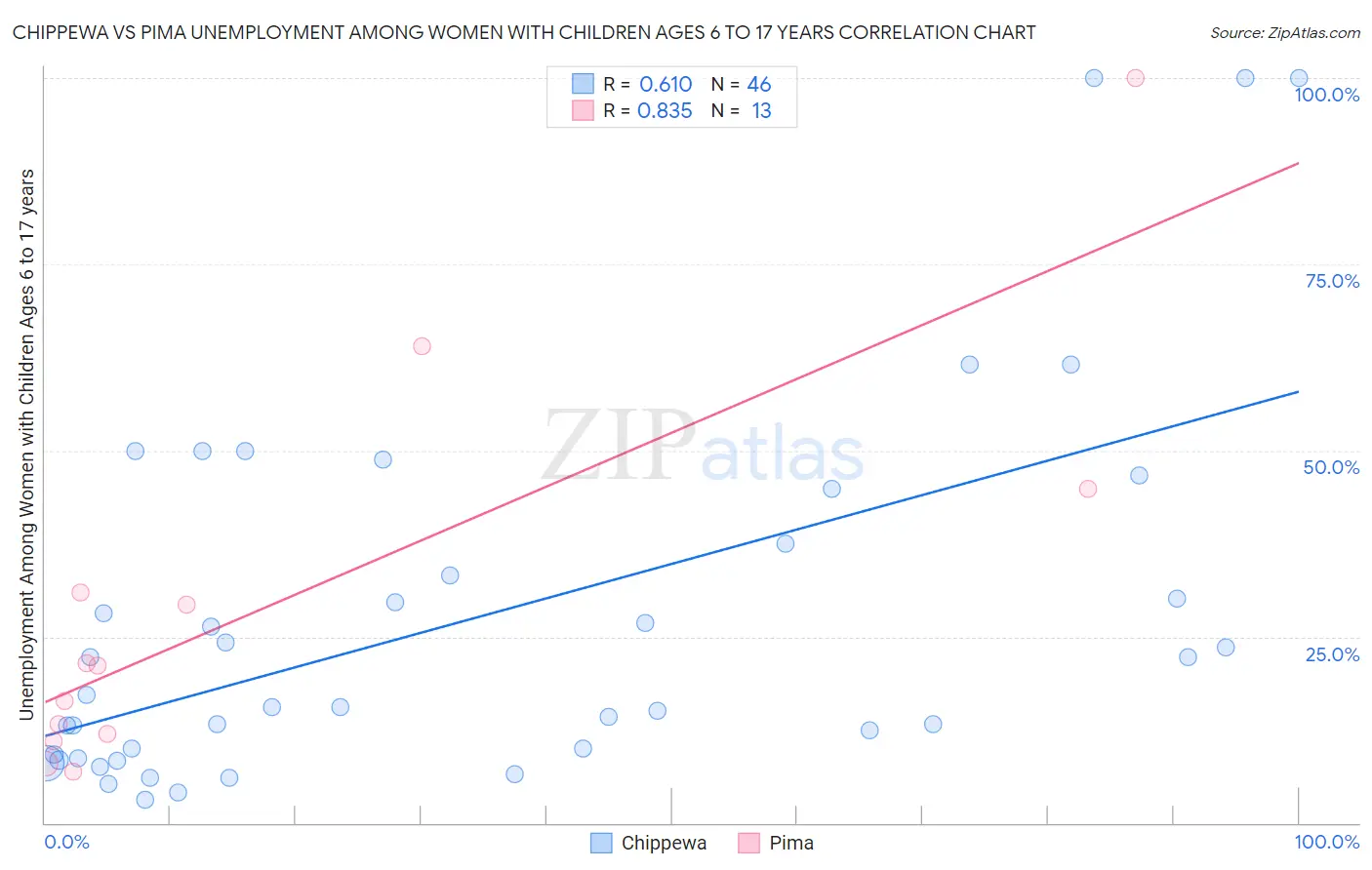Chippewa vs Pima Unemployment Among Women with Children Ages 6 to 17 years
COMPARE
Chippewa
Pima
Unemployment Among Women with Children Ages 6 to 17 years
Unemployment Among Women with Children Ages 6 to 17 years Comparison
Chippewa
Pima
11.1%
UNEMPLOYMENT AMONG WOMEN WITH CHILDREN AGES 6 TO 17 YEARS
0.0/ 100
METRIC RATING
330th/ 347
METRIC RANK
18.9%
UNEMPLOYMENT AMONG WOMEN WITH CHILDREN AGES 6 TO 17 YEARS
0.0/ 100
METRIC RATING
347th/ 347
METRIC RANK
Chippewa vs Pima Unemployment Among Women with Children Ages 6 to 17 years Correlation Chart
The statistical analysis conducted on geographies consisting of 165,586,113 people shows a significant positive correlation between the proportion of Chippewa and unemployment rate among women with children between the ages 6 and 17 in the United States with a correlation coefficient (R) of 0.610 and weighted average of 11.1%. Similarly, the statistical analysis conducted on geographies consisting of 57,470,854 people shows a very strong positive correlation between the proportion of Pima and unemployment rate among women with children between the ages 6 and 17 in the United States with a correlation coefficient (R) of 0.835 and weighted average of 18.9%, a difference of 70.3%.

Unemployment Among Women with Children Ages 6 to 17 years Correlation Summary
| Measurement | Chippewa | Pima |
| Minimum | 3.1% | 6.8% |
| Maximum | 100.0% | 100.0% |
| Range | 96.9% | 93.2% |
| Mean | 27.4% | 29.2% |
| Median | 16.4% | 21.2% |
| Interquartile 25% (IQ1) | 9.2% | 11.5% |
| Interquartile 75% (IQ3) | 37.5% | 37.9% |
| Interquartile Range (IQR) | 28.3% | 26.4% |
| Standard Deviation (Sample) | 25.2% | 26.8% |
| Standard Deviation (Population) | 24.9% | 25.7% |
Demographics Similar to Chippewa and Pima by Unemployment Among Women with Children Ages 6 to 17 years
In terms of unemployment among women with children ages 6 to 17 years, the demographic groups most similar to Chippewa are Pennsylvania German (11.0%, a difference of 0.48%), Ottawa (10.9%, a difference of 2.0%), Black/African American (11.4%, a difference of 2.6%), Tsimshian (11.4%, a difference of 2.7%), and Native/Alaskan (11.5%, a difference of 3.4%). Similarly, the demographic groups most similar to Pima are Yup'ik (18.6%, a difference of 1.4%), Arapaho (16.8%, a difference of 12.0%), Cheyenne (16.4%, a difference of 15.2%), Inupiat (14.9%, a difference of 27.1%), and Yuman (14.8%, a difference of 27.5%).
| Demographics | Rating | Rank | Unemployment Among Women with Children Ages 6 to 17 years |
| Ottawa | 0.0 /100 | #328 | Tragic 10.9% |
| Pennsylvania Germans | 0.0 /100 | #329 | Tragic 11.0% |
| Chippewa | 0.0 /100 | #330 | Tragic 11.1% |
| Blacks/African Americans | 0.0 /100 | #331 | Tragic 11.4% |
| Tsimshian | 0.0 /100 | #332 | Tragic 11.4% |
| Natives/Alaskans | 0.0 /100 | #333 | Tragic 11.5% |
| Ugandans | 0.0 /100 | #334 | Tragic 12.0% |
| Colville | 0.0 /100 | #335 | Tragic 12.3% |
| Houma | 0.0 /100 | #336 | Tragic 12.5% |
| Immigrants | Yemen | 0.0 /100 | #337 | Tragic 12.7% |
| Hopi | 0.0 /100 | #338 | Tragic 12.9% |
| Sioux | 0.0 /100 | #339 | Tragic 13.2% |
| Puerto Ricans | 0.0 /100 | #340 | Tragic 13.9% |
| Navajo | 0.0 /100 | #341 | Tragic 14.2% |
| Yuman | 0.0 /100 | #342 | Tragic 14.8% |
| Inupiat | 0.0 /100 | #343 | Tragic 14.9% |
| Cheyenne | 0.0 /100 | #344 | Tragic 16.4% |
| Arapaho | 0.0 /100 | #345 | Tragic 16.8% |
| Yup'ik | 0.0 /100 | #346 | Tragic 18.6% |
| Pima | 0.0 /100 | #347 | Tragic 18.9% |